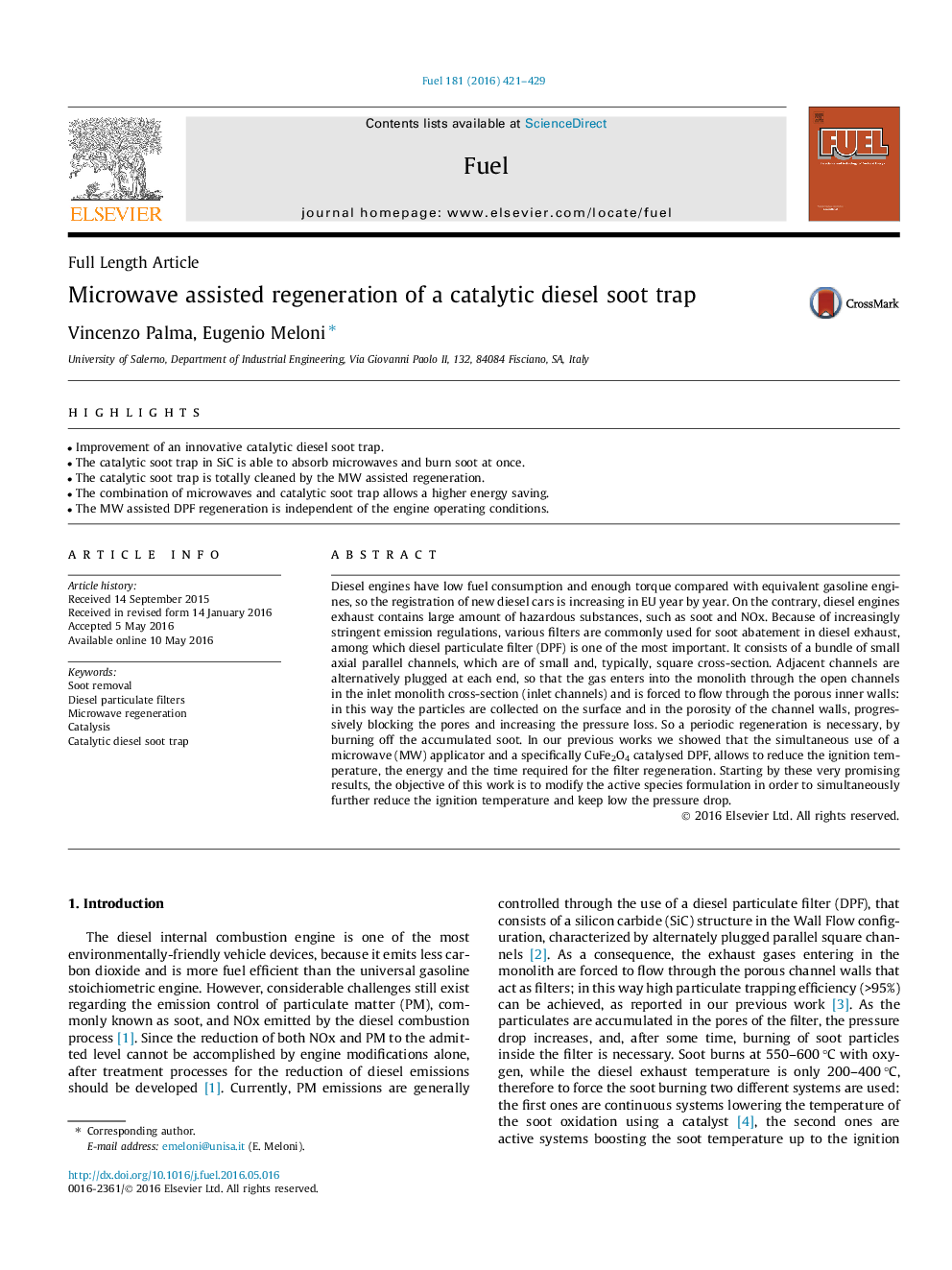| کد مقاله | کد نشریه | سال انتشار | مقاله انگلیسی | نسخه تمام متن |
|---|---|---|---|---|
| 204931 | 461093 | 2016 | 9 صفحه PDF | دانلود رایگان |
• Improvement of an innovative catalytic diesel soot trap.
• The catalytic soot trap in SiC is able to absorb microwaves and burn soot at once.
• The catalytic soot trap is totally cleaned by the MW assisted regeneration.
• The combination of microwaves and catalytic soot trap allows a higher energy saving.
• The MW assisted DPF regeneration is independent of the engine operating conditions.
Diesel engines have low fuel consumption and enough torque compared with equivalent gasoline engines, so the registration of new diesel cars is increasing in EU year by year. On the contrary, diesel engines exhaust contains large amount of hazardous substances, such as soot and NOx. Because of increasingly stringent emission regulations, various filters are commonly used for soot abatement in diesel exhaust, among which diesel particulate filter (DPF) is one of the most important. It consists of a bundle of small axial parallel channels, which are of small and, typically, square cross-section. Adjacent channels are alternatively plugged at each end, so that the gas enters into the monolith through the open channels in the inlet monolith cross-section (inlet channels) and is forced to flow through the porous inner walls: in this way the particles are collected on the surface and in the porosity of the channel walls, progressively blocking the pores and increasing the pressure loss. So a periodic regeneration is necessary, by burning off the accumulated soot. In our previous works we showed that the simultaneous use of a microwave (MW) applicator and a specifically CuFe2O4 catalysed DPF, allows to reduce the ignition temperature, the energy and the time required for the filter regeneration. Starting by these very promising results, the objective of this work is to modify the active species formulation in order to simultaneously further reduce the ignition temperature and keep low the pressure drop.
Journal: Fuel - Volume 181, 1 October 2016, Pages 421–429
